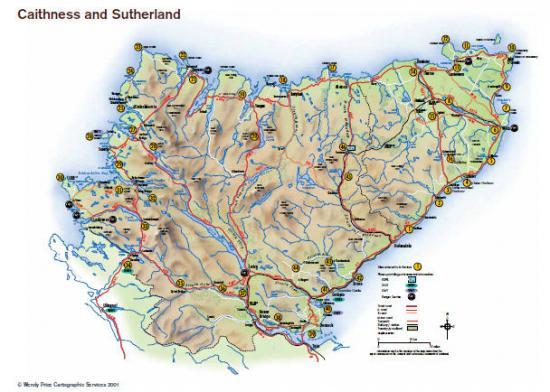Where To See Wildlife in Caithness & Sutherland
24th June 2014

Caithness and Sutherland contain rock formations of outstanding geological interest, which span over 2,800 million years and include some of the oldest surface rocks in Britain.
Along the west coast, the oldest rock in the region, Lewisian gneiss, creates a landscape of low hills and scattered lochans. Rising from this gneiss landscape are huge masses of Torridonian sandstone, capped by quartzite, which form the distinctive mountains of Cul Mor, Suilven, Canisp and Quinag.
Much of Sutherland is composed of schists and granulites of the Moine series, named after A'Mhoine near Tongue where they were first described. The softer schists of this series have weathered to produce the level landscape of the peatlands, from which rise the more resistant rock masses of Ben Hope and Ben Klibreck. The Moine Thrust zone, which lies east of the gneiss and sandstone area, crosses the region from north to south. This zone provides evidence of immense disturbance of the earth's crust some 400 million years ago and has long been an area of study for geologists from all over the world. The limestone of west Sutherland forms the steep slopes of Stronchrubie and Knockan, as well as the limestone pavements, underground water systems and caves at Inchnadamph National Nature Reserve.
In contrast to Sutherland, Old Red Sandstone rocks dominate the generally flat landscape of Caithness. These horizontal beds of mudstone and sandstone were formed from sediments laid down in an ancient freshwater lake which once extended from Shetland to Inverness and across to Norway. There are well-preserved fossils in some of these rocks and the flagstones (mudstones) have been extensively quarried in the past, forming an important industry in areas of Caithness.
There are several extensive masses of granite in the region, and rocks of the Jurassic age (135-205 million years ago) with abundant fossils outcrop along the east coast of Sutherland, north of Golspie. Coal seams in these rocks were worked at Brora between 1929 and the 1970s when mining finally ceased.
Oil-forming hydrocarbons are also associated with rocks of Jurassic age. These rocks occur beneath the sea in this area and the Beatrice Oil Field, off the east coast, is an important part of the North Sea oil industry.
See the full report HERE



